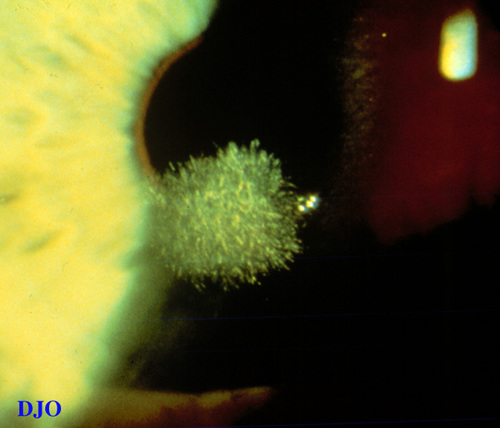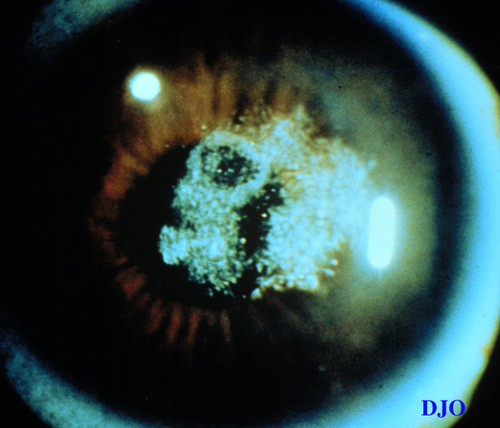Cornea/Refractive Surgery Quiz 13

Figure 1
Figures 1-2. Anterior segment photographs of 2 different individuals with the same condition.
Figures 1-2. Anterior segment photographs of 2 different individuals with the same condition.

FIgure 2
Answer: Central crystalline dystrophy of Schnyder.
2. What is the usual presentation for this condition?
Answer: Yellow-white needle like crystals in irregular ring-like deposits are seen centrally just below Bowman's membrane. Dense corneal arcus often accompanies this condition. Central crystalline dystrophy of Schnyder can be detected as early as the first year of life. It tends to be slowly progressive over decades until the corneal stroma becomes diffusely opacified. Corneal epithelium remains smooth and uninvolved.
3. What is the pathophysiology of this condition?
Answer: The condition is caused by the deposition of cholesterol, cholesterol esters and triglycerides in the corneal stroma. Significantly elevated serum cholesterol and triglycerides are relatively common.
4. What is the inheritance pattern of this condition?
Answer: Autosomal dominant.
5. Is there any GROUP of people in whom this condition is more common?
Answer: It is more common in people of Scandinavian descent
6. What treatment is indicated and when is it recommended?
Answer: Penetrating keratoplasty is the treatment of choice, and is generally required after 45 years of age. Elevated serum cholesterol and triglycerides should be managed in conjunction with a medical specialist.
7. Does this condition recur?
Answer: Yes, but grafts tend to remain clear for 10-20 years.